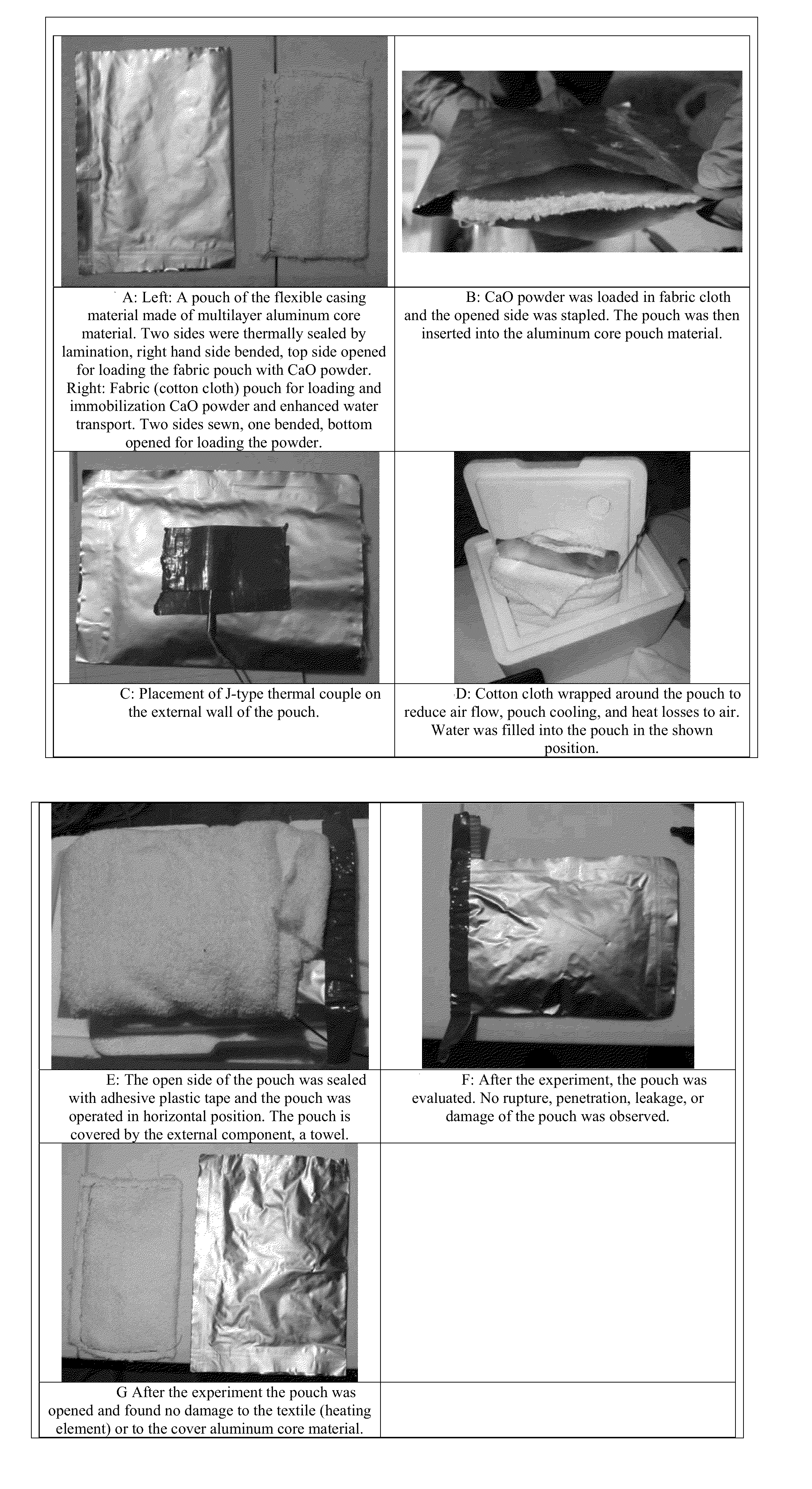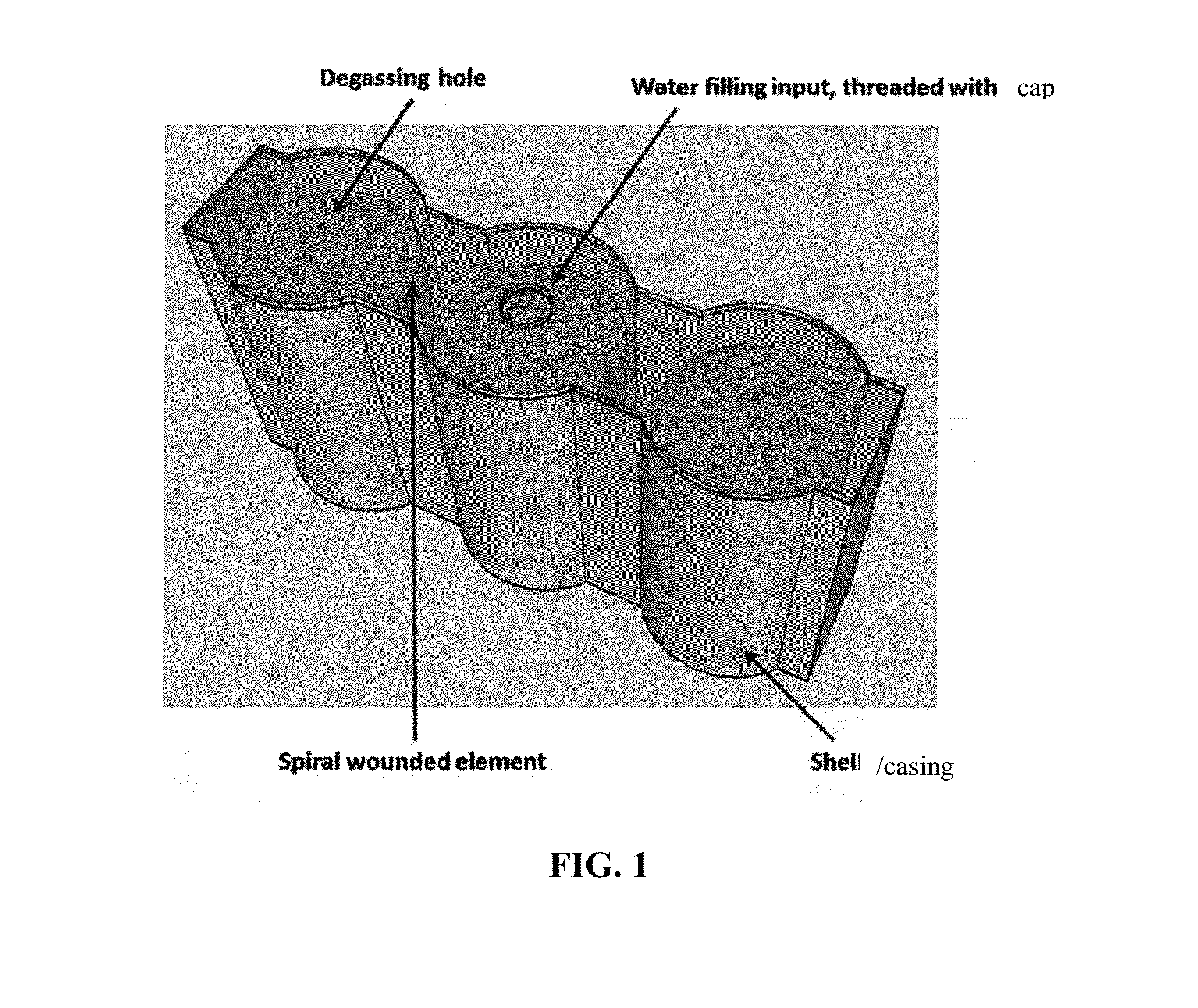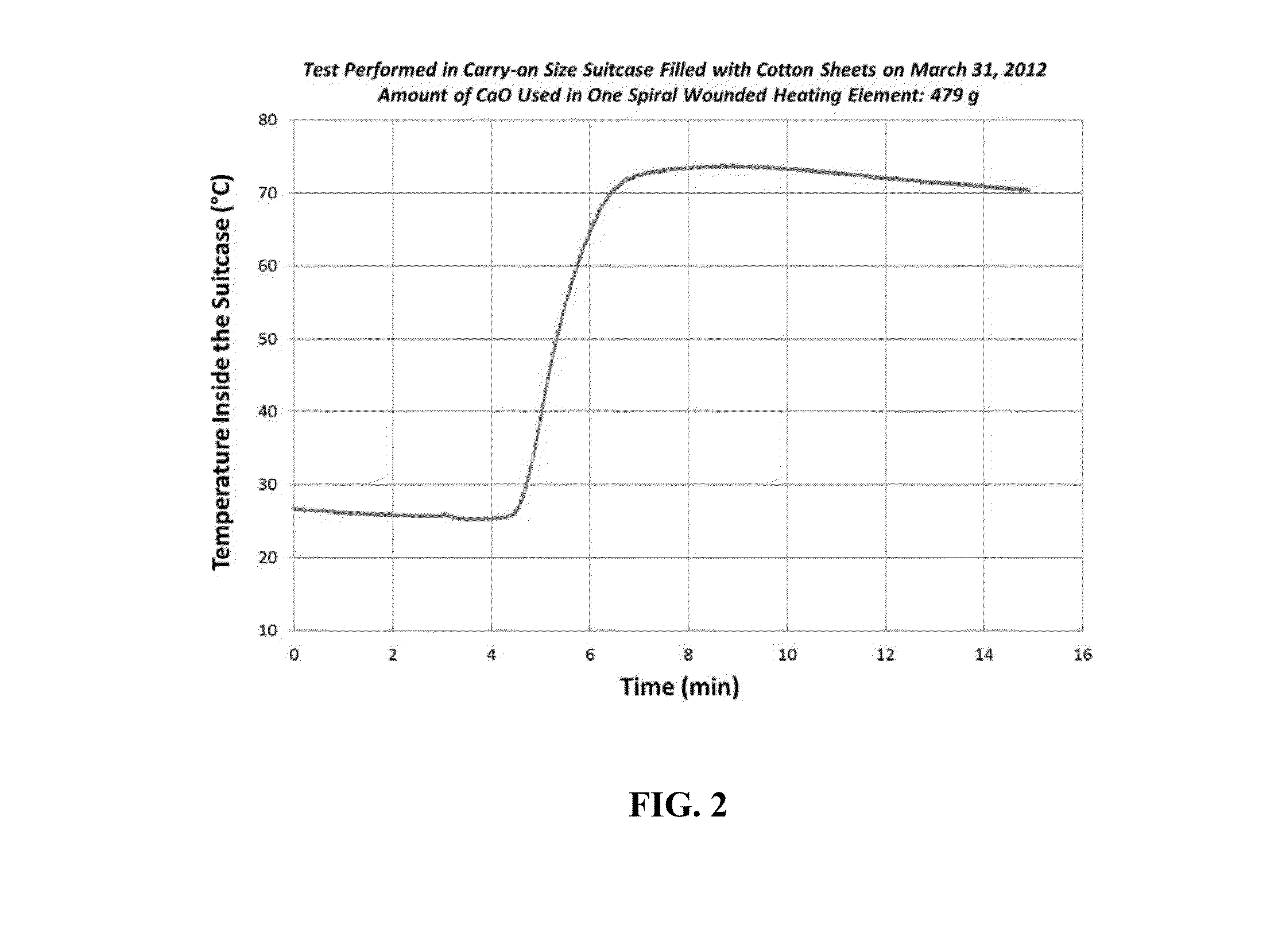Methods, Devices and Systems for Thermal-Based Pest Control
a technology of pest control and thermal energy, applied in the field of thermal energy-based pest control, can solve the problems of inability to provide electricity, travel, and inability to use the device or chemical, and achieve the effects of reducing the number of living organisms, minimizing heat loss, and minimizing heat loss
- Summary
- Abstract
- Description
- Claims
- Application Information
AI Technical Summary
Benefits of technology
Problems solved by technology
Method used
Image
Examples
example 1
Testing of Devices and Suitcases
[0045]Several tests were conducted to demonstrate functionality of an example of the present invention in terms of temperature rise in the heated body. In the example of which results are shown in FIG. 2, one spiral wound heating element made of cotton and filled with 279 g of calcium oxide powder was placed in a metal container which was then filled with water, and the entire device was placed in a suitcase. A computer controlled data-logger was used to monitor temperature in the suitcase using a J type thermocouple. The time dependent temperature results are shown in graphically in FIG. 2. The suitcase contained cotton sheets.
example 2
Testing of a Device of FIG. 3
[0046]The heat generating reaction was run in a device made from a casing material shaped as a pouch made from a multiplayer aluminum core material purchased from Targray, Montreal Canada. The heating element which is a container of the chemical compound was a slightly smaller pouch made of a cotton toweling textile material. As shown in FIG. 3A, on the left is the casing pouch that was made by laminating the sides of the material to form a pouch. On the right, the heating element which is a container of the chemical compound contained calcium oxide powder, and the pouch was formed by sewing the sides of the material together to form a pouch, leaving one side open for adding the calcium oxide powder. Once the powder was added, the open side was stapled shut. The container of the chemical compound was placed within the casing through the open end of the casing pouch. (See FIG. 3B). The casing had a J-type thermocouple attached to the exterior of the casin...
PUM
 Login to View More
Login to View More Abstract
Description
Claims
Application Information
 Login to View More
Login to View More - R&D
- Intellectual Property
- Life Sciences
- Materials
- Tech Scout
- Unparalleled Data Quality
- Higher Quality Content
- 60% Fewer Hallucinations
Browse by: Latest US Patents, China's latest patents, Technical Efficacy Thesaurus, Application Domain, Technology Topic, Popular Technical Reports.
© 2025 PatSnap. All rights reserved.Legal|Privacy policy|Modern Slavery Act Transparency Statement|Sitemap|About US| Contact US: help@patsnap.com



